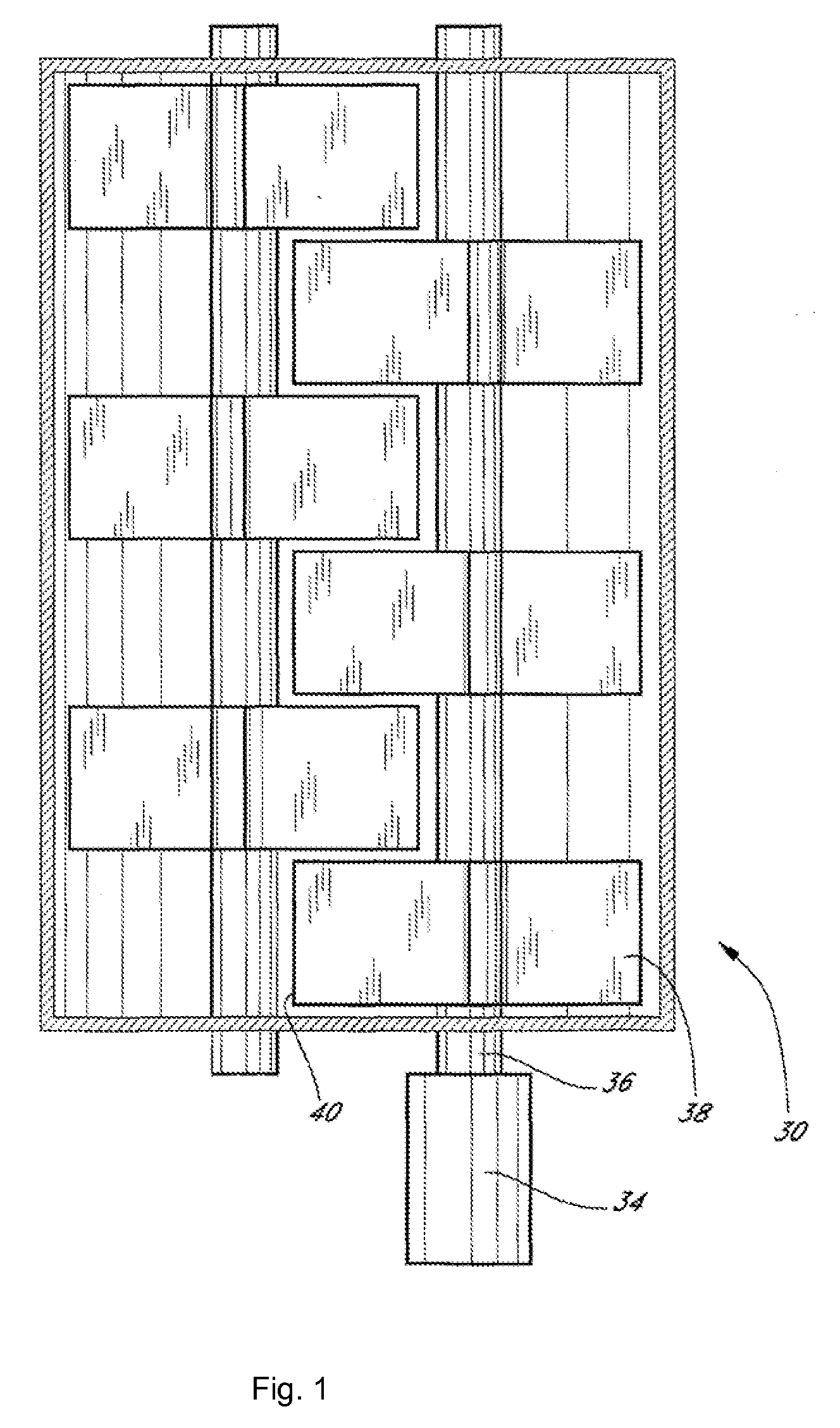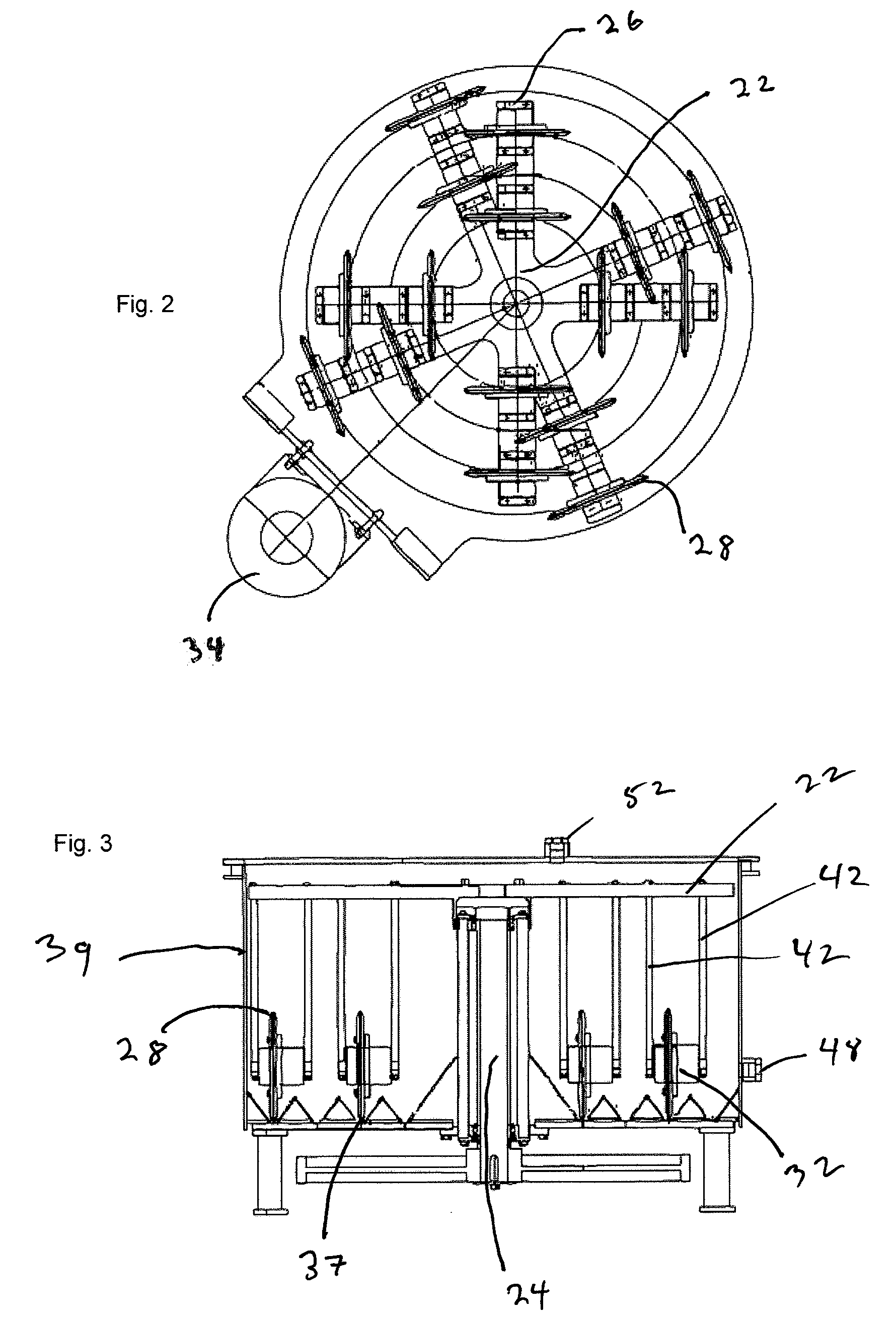Disruptor System for Dry Cellulosic Materials
a technology of disruptor system and cellulosic material, which is applied in the field of disruptor system for dry cellulosic material, can solve the problems of economic downturn, temporary taking the pressure off of energy supply, and falling energy prices
- Summary
- Abstract
- Description
- Claims
- Application Information
AI Technical Summary
Benefits of technology
Problems solved by technology
Method used
Image
Examples
Embodiment Construction
[0028]The following description is provided to enable any person skilled in the art to make and use the invention and sets forth the best modes contemplated by the inventor of carrying out his invention. Various modifications, however, will remain readily apparent to those skilled in the art, since the general principles of the present invention have been defined herein specifically to provide an apparatus and an improved essentially mechanical process to pretreat a variety of types of cellulosic biomass to produce micro-powder which is readily hydrolyzable and readily susceptible to combustion.
[0029]The present inventor has unexpectedly found a new dry mechanical method of disrupting cellulosic biomass to extremely small particles that readily undergo enzymatic or other chemical hydrolysis as well as oxidation (combustion). Plant biomass consists of primarily of cellulosic cell walls. In general, cellulosic biomass cannot be readily dissolved with in any solvent. The paracrystallin...
PUM
| Property | Measurement | Unit |
|---|---|---|
| Percent by mass | aaaaa | aaaaa |
| Diameter | aaaaa | aaaaa |
| Diameter | aaaaa | aaaaa |
Abstract
Description
Claims
Application Information
 Login to View More
Login to View More - R&D
- Intellectual Property
- Life Sciences
- Materials
- Tech Scout
- Unparalleled Data Quality
- Higher Quality Content
- 60% Fewer Hallucinations
Browse by: Latest US Patents, China's latest patents, Technical Efficacy Thesaurus, Application Domain, Technology Topic, Popular Technical Reports.
© 2025 PatSnap. All rights reserved.Legal|Privacy policy|Modern Slavery Act Transparency Statement|Sitemap|About US| Contact US: help@patsnap.com



